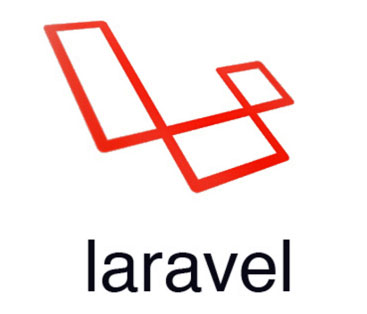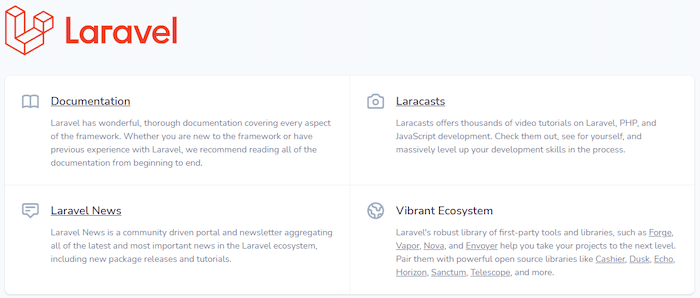
In this tutorial, we will show you how to install and configuration of Laravel on your CentOS 7. For those of you who didn’t know, Laravel is a powerful PHP framework designed to make web development easier and more efficient. It provides a robust set of tools and an elegant syntax that simplifies common tasks such as routing, authentication, and caching. CentOS 7, a popular and stable Linux distribution, is an excellent choice for hosting Laravel applications.
One of the things that make Laravel that good is the large vibrant community behind it. Laravel also extensively utilizes Composer, the de-facto PHP dependency manager. By using Composer, Laravel provides you with complete freedom to choose and build your application structure. There are so many composer packages available at packagist.org which will definitely make your programming life easier.
This article assumes you have at least basic knowledge of Linux, know how to use the shell, and most importantly, you host your site on your own VPS. The installation is quite simple and assumes you are running in the root account, if not you may need to add ‘sudo‘ to the commands to get root privileges. I will show you the step-by-step installation of the Laravel PHP Framework on a CentOS 7 server.
Prerequisites
- A server running one of the following operating systems: CentOS 7.
- It’s recommended that you use a fresh OS install to prevent any potential issues.
- SSH access to the server (or just open Terminal if you’re on a desktop).
- A
non-root sudo useror access to theroot user. We recommend acting as anon-root sudo user, however, as you can harm your system if you’re not careful when acting as the root.
Install Laravel on CentOS 7
Step 1. First, let’s start by ensuring your system is up-to-date.
yum -y update
Step 2. Install LAMP server.
A CentOS 7 LAMP server is required. If you do not have LAMP installed, you can follow our guide here. Also, install the required PHP modules:
yum install php-mysql php-mcrypt php-dom php-mbstring php-gd
Step 3. Install Composer.
Install Composer which is the tool for dependency management in PHP.
curl -k -sS https://getcomposer.org/installer | php
Once the download and installation of the composer are finished we will need to move the composer to be available within our PATH. The see the available PATH locations just type this command:
echo $PATH
In this tutorial, we will put the composer in our /usr/local/bin/ directory. We will also rename the composer’s name from composer.phar to composer. To do that type the following command:
mv composer.phar /usr/local/bin/composer
Give execute permission to the composer:
chmod +x /usr/local/bin/composer
Step 4. Installing Laravel.
Download the latest version of Laravel, Use the below command to clone the master repo of Laravel from GitHub:
cd /var/www git clone https://github.com/laravel/laravel.git
After that move to the Laravel code directory and use composer to install all dependencies required for the Laravel framework:
cd /var/www/laravel composer install
This will take a while according to the network speed. After that set proper permissions on files:
chown -R apache.apache /var/www/laravel chmod -R 755 /var/www/laravel
Set Encryption Key.
Now set the 32-bit long random number encryption key, which is used by the Illuminate encrypter service:
### php artisan key:generate Application key [Lf54qK56s3qDh0ywgf9JdRGDTN0oV9qI] set successfully
Step 5. Configuring Apache web server for Laravel.
We will create an Apache virtual host for your Laravel website. First, create ‘/etc/httpd/conf.d/vhosts.conf’ file with using a text editor of your choice:
nano /etc/httpd/conf.d/vhosts.conf IncludeOptional vhosts.d/*.conf
Next, create the virtual host:
mkdir /etc/httpd/vhosts.d/ nano /etc/httpd/vhosts.d/yourdomain.com.conf
Add the following lines:
<VirtualHost YOUR_SERVER_IP:80> ServerAdmin webmaster@yourdomain.com DocumentRoot "/var/www/laravel/public" ServerName yourdomain.com ServerAlias www.yourdomain.com ErrorLog "/var/log/httpd/yourdomain.com-error_log" CustomLog "/var/log/httpd/yourdomain.com-access_log" combined <Directory "/var/www/laravel/public/"> DirectoryIndex index.html index.php Options FollowSymLinks AllowOverride All Require all granted </Directory> </VirtualHost>
Save and close the file. Restart the Apache service for the changes to take effect:
systemctl restart httpd.service
Step 6. Accessing Laravel.
Laravel will be available on HTTP port 80 by default. Open your favorite browser and navigate to http://your-domain.com or http://your-server-ip and complete the required steps to finish the installation. If you are using a firewall, please open port 80 to enable access to the control panel.

Congratulations! You have successfully installed Laravel. Thanks for using this tutorial for installing Laravel PHP Framework on your CentOS 7 system. For additional help or useful information, we recommend you to check the official Laravel website.